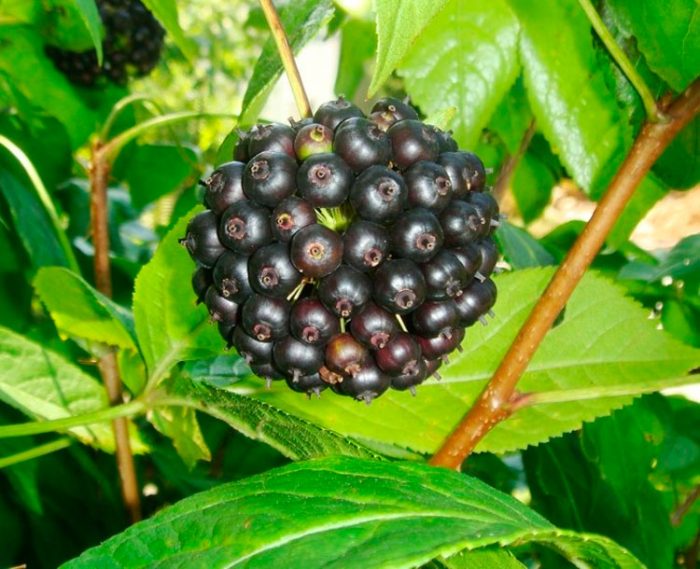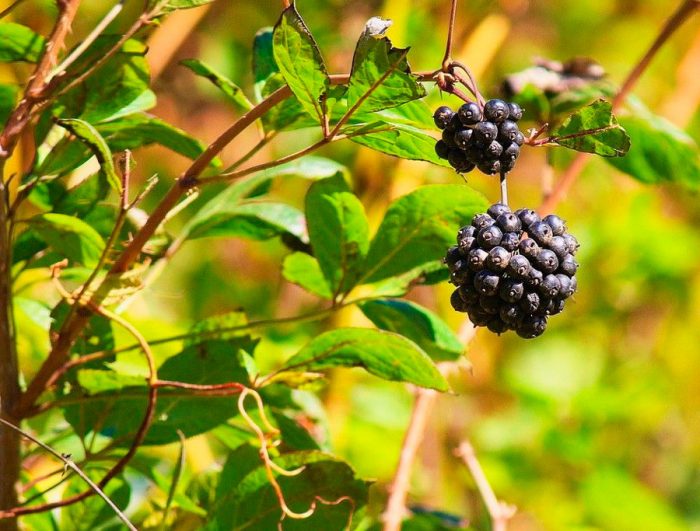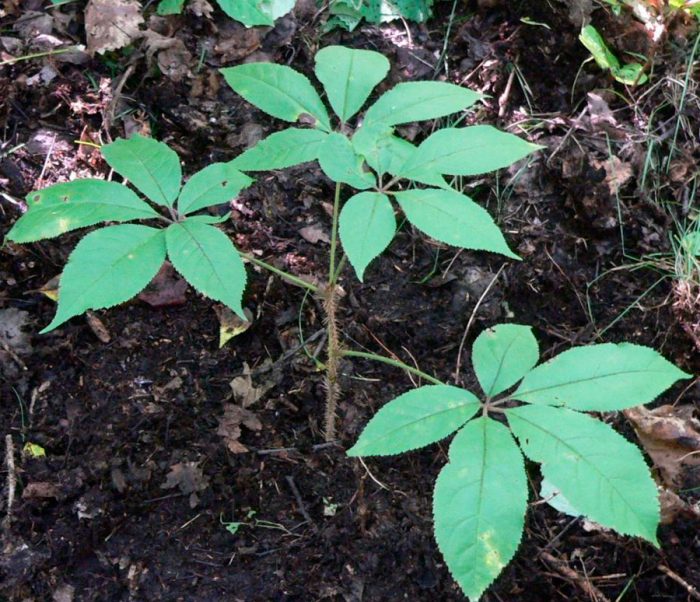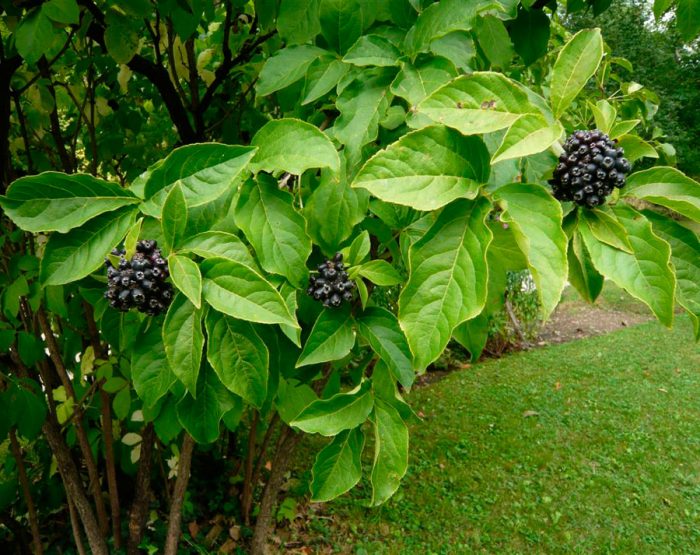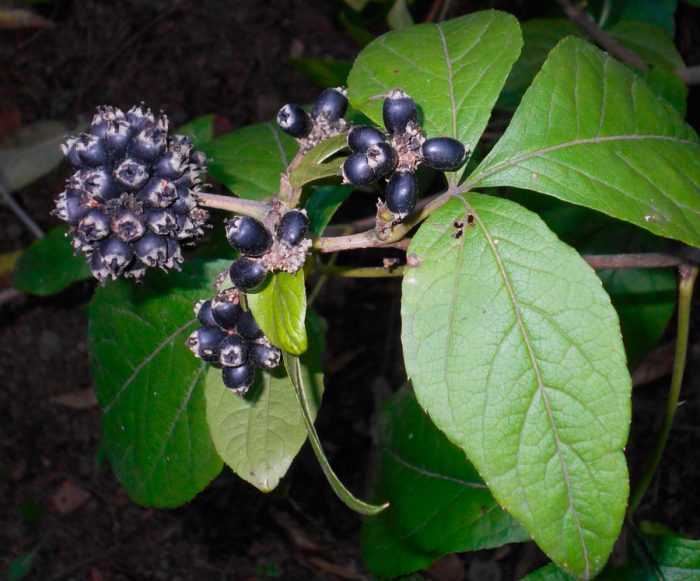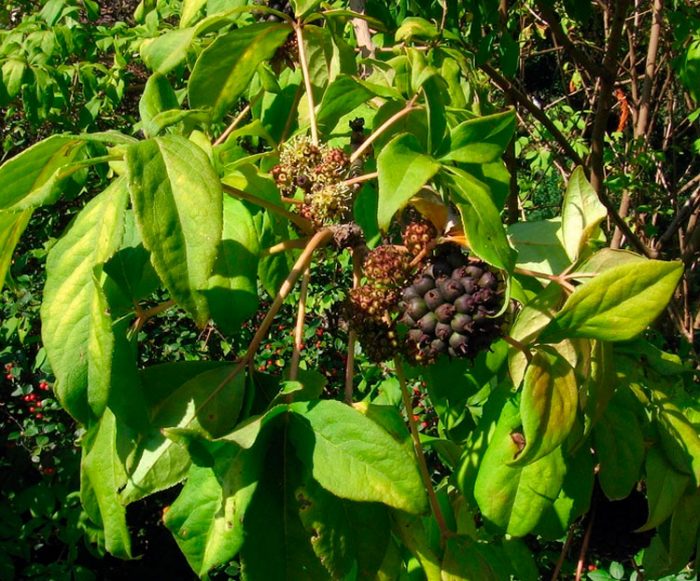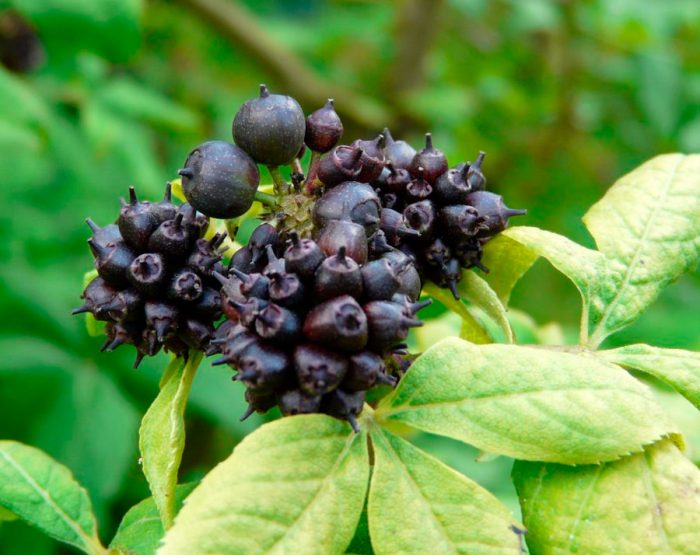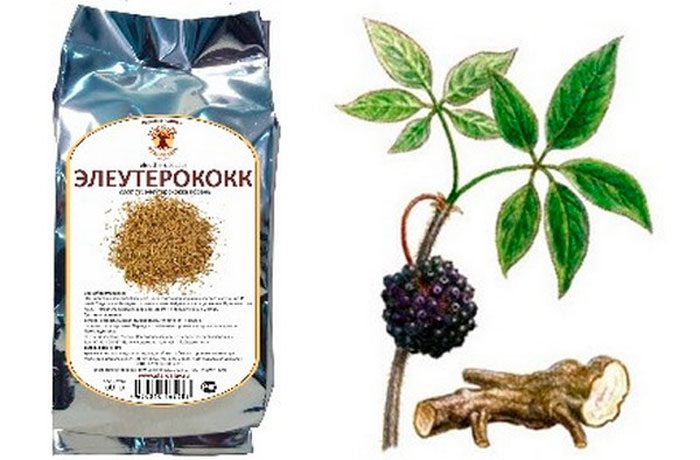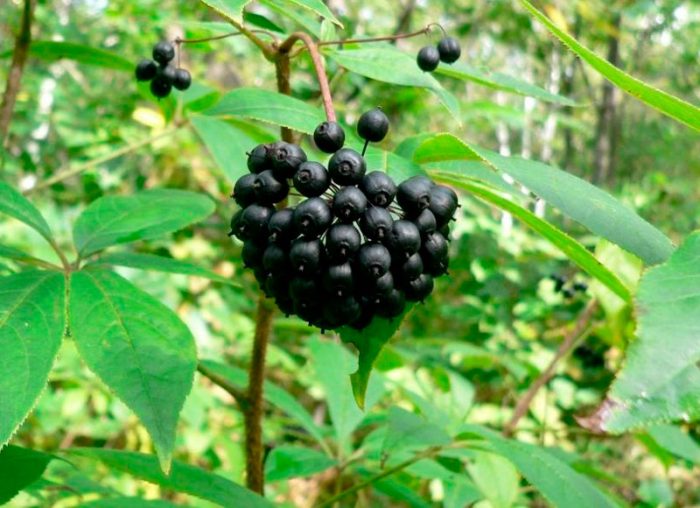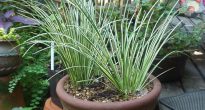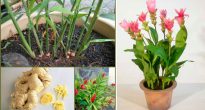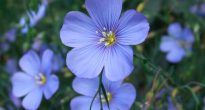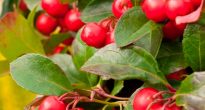The plant Eleutherococcus is represented by thorny shrubs and trees and is part of the Araliaceae family. This genus unites about 30 species. In nature, such a plant can be found from southeastern Siberia to Japan, and further south to the Philippine Islands. In the western and central regions of China, the largest number of species of Eleutherococcus is found. The most popular among gardeners is Eleutherococcus senticosus, which is an ornamental and medicinal garden shrub.
Content
Features of Eleutherococcus
Eleutherococcus prickly is also called wild pepper, devil's bush or prickly freeberry. This deciduous shrub has a grayish bark. Its rhizome is highly branched, located in the upper layer of the soil, a large number of adventitious roots grows, their length can reach 30 m.The height of such a plant, which has many stems, varies from two to five meters. On the surface of straight shoots, there are many thin spines directed downward. The composition of long-petiolate palmate-complex leaf plates includes 5 oval pointed leaves, they can be bare or slightly bristly on the front side, and on the seamy surface along the veins they are covered with red hair, their edge is sharp-toothed. The simple umbellate inflorescences that grow at the ends of the stems contain fragrant small flowers with long stalks: pistillate flowers are pale yellow, and staminate flowers are light purple. The fruits of such a plant should not be eaten. They are black glossy drupes of a spherical shape, reaching about 10 mm in diameter, inside they have 5 pale yellow bones, the shape of which is similar to a crescent. Their ripening is observed in the first half of the autumn period, they stay on the branches for a long time. In nature, this species grows in cedar-deciduous forests and forms undergrowth, it can also be found in floodplain spruce forests. Eleutherococcus has been cultivated since 1862.
Growing Eleutherococcus in the garden
Landing rules
Eleutherococcus is a shade-loving plant that is undemanding to the composition of the soil. It grows best in moist, nutritious soil in light shade under a large deciduous tree. When grown in mid-latitudes for the winter, such a shrub does not need to be covered.
Experienced gardeners recommend planting such a shrub in the autumn immediately after the leaf fall ends. If you wish, you can plant it in the spring, but you need to be in time before the buds on the trees swell.
Site preparation must be done in advance. To do this, they dig it to a depth of 25 centimeters, while introducing manure into the soil (5–6 kilograms per 1 square meter of the plot). The depth of the planting pit should be 0.5 m, and in diameter it should reach 0.6 m.When planting between the bushes, a distance of 2 meters should be observed. The seedling is placed in the middle of the pit, after which it is filled with soil mixed with manure. Make sure that the root collar is not buried more than 30 mm into the ground. When the shrub is planted, the trunk circle must be tamped a little, and then abundant watering is carried out with a weak solution of manganese potassium. Experts in one area recommend immediately planting several shrubs close to each other, because only male or female flowers grow on each of them. In the case when the shrubs are planted in the autumn after the onset of stable cold weather, the surface of the trunk circle is covered with a three-centimeter layer of humus, this will protect the plant's root system from severe frosts. The first flowering most often occurs only in the fourth year after planting in open ground.
Care for Eleutherococcus in the garden
This crop needs watering only when there is a prolonged dry period. Often it is not necessary to loosen the surface of the trunk circle or remove the weeds, because the growing weeds protect the soil surface above the roots from strong heat, while they do not cause any harm to the bush. If desired, for this purpose, near Eleutherococcus, you can grow bent grass or another ground cover plant, which must be non-aggressive.
During the season, such a plant needs only one feeding; for this, a solution of complex mineral fertilizer is used (for 1 bucket of water, 2 tbsp. L.). Sanitary pruning is usually done in springtime. To do this, cut off injured, sick and frozen stems and branches, as well as those that grow inside the bush. If desired, you can also make a light formative pruning if the outwardly the plant looks untidy.
Diseases and pests
This shrub is incredibly resistant to both diseases and harmful insects.
Types and varieties of Eleutherococcus with photos and names
Eleutherococcus sessiliflorus (Eleutherococcus sessiliflorus)
In addition to the above-described Eleutherococcus prickly, gardeners sometimes grow Eleutherococcus sessile flowering. The height of this large shrub is about 300 centimeters; on its surface there are large tiled thorns, which are relatively rare. However, there are also such types of Eleutherococcus, which do not have thorns at all. The leaf plates are three-five-lobed, their petioles are about 15 centimeters long. The dense, umbrella-shaped inflorescences are composed of small, dark brown flowers. The fruit is a glossy black drupe. In nature, this species can be found in Korea, the Far East and China.
Eleutherococcus Henry (Eleutherococcus henryi)
This type of gardeners is cultivated very rarely. Such a shrub is characterized by slow growth and frost resistance, in height it can reach 100-300 cm.
Eleutherococcus Simon (Eleutherococcus simonii)
This kind is also very rare in gardens. He is originally from Central China.The bush reaches a height of about 5 meters; this species is not adapted to winter in conditions of middle latitudes.
Properties of Eleutherococcus: harm and benefit
Medicinal properties of Eleutherococcus
The Eleutherococcus plant is also called "Siberian ginseng" because it contains almost all those substances that are contained in the "root of life". The root of such a shrub and its foliage are distinguished by the healing properties. Harvesting of roots is carried out in autumn or spring. At the same time, the preparation of leaf plates and their drying are carried out during the flowering period. The main active ingredients of such a plant are glycosides, and in addition to them, it contains essential oils, gums, resins, polysaccharides and vegetable fats, which are very valuable substances.
This culture is appreciated for the fact that it helps to increase the endurance and working capacity of the body, improve vision, lower the amount of sugar and cholesterol in the blood, accelerate regeneration processes, return male strength, relieve physical and mental fatigue, normalize metabolic processes and the activity of the nervous system, relieve pain during menstruation, and it also helps reduce the risk of developing malignant tumors. Means made on the basis of Eleutherococcus are recommended to be taken orally with increased irritability, depletion of the nervous system, asthenic syndrome, vegetative-vascular dystonia, arrhythmias, hypotension, the initial stage of diabetes mellitus, cancer, menopause and painful menstruation. Still, such drugs are used externally for baldness and oily seborrhea.
Honey from such a plant in combination with its roots has a tonic and stimulating effect. Such a tool helps to reduce the amount of cholesterol in the blood, increase physical endurance, relieve the effects of stress, protect the body from toxins and infections, strengthen the immune system, normalize metabolic processes, and it is also used to prevent diabetes mellitus.
Preparations made on the basis of Eleutherococcus are sold in the pharmacy in the form of capsules, syrup, dry extract, tablets, pills, liquid extract (tincture of Eleutherococcus). As a rule, tablet forms (dragees, tablets and capsules) are recommended to be taken no more than four pieces per day, while liquid preparations, depending on the disease, are drunk in a course of 25 to 30 days twice or three times a day, 15-50 drops on an empty stomach for half an hour before a meal.


Watch this video on YouTube
Folk recipes
In alternative medicine, they also use funds made on the basis of Eleutherococcus, namely: ointment, decoction of roots and tea:
- Tea... 1 tbsp. freshly boiled water is combined with 1 tsp. crushed raw materials. After that, the container must be tightly covered. The drink will be ready after 10-15 minutes. It is recommended to drink it for asthenia, colds, vitamin deficiency, and also in order to strengthen the body.
- Decoction... 1 liter of water is combined with 50 grams of crushed roots. The mixture is placed on the stove and boiled over low heat for a quarter of an hour. When the mixture has cooled, it is filtered. Drink infusion of ½ tbsp. 3 times a day with vegetative-vascular dystonia, to improve physical and mental activity, as well as to strengthen the body, weakened by a prolonged illness.
- Ointment for warts... Pork fat, fresh bush roots and garlic cloves (1: 1: 1) must be minced with a meat grinder. The mixture is applied in a layer to a gauze bandage and applications are made to the wart, fixing them with a plaster. This procedure is recommended to be done at night.
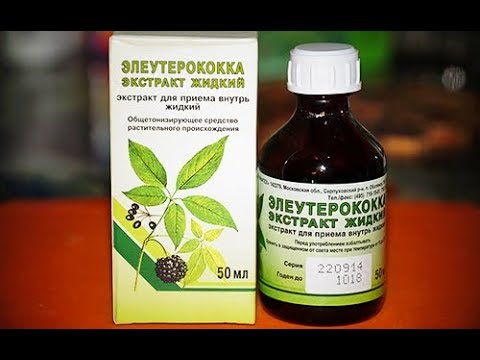

Watch this video on YouTube
Contraindications
Such a plant has one more advantage, it is well absorbed by almost all people. Very rarely, after taking a drug made on the basis of Eleutherococcus, diarrhea develops.For hypertensive patients such drugs are contraindicated.

